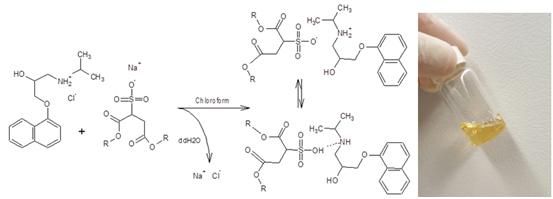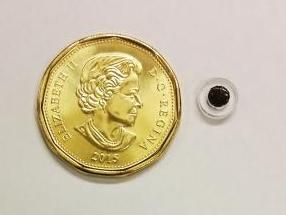Liquid salts deliver drugs through the skin with enhanced efficacy and reduced toxicity
Advertisement
Formulating drugs as liquid salts may provide a safe and efficient strategy for topical delivery of drugs that cause skin toxicity. A team of researchers from the University of California, Santa Barbara (UCSB) in Santa Barbara, CA has demonstrated a novel formulation of propranolol as a liquid salt which enables delivery through skin with reduced toxicity.

An antihypertensive drug propranolol hydrochloride is converted into a transparent liquid salt by combining with equimolar amounts of sodium dialkylsulfosuccinate. Propranonol liquid salt penetrated the skin without the need of any addition of solvent. Moreover, the lead salt showed reduced skin toxicity compared to free drug.
TECHNOLOGY
Skin toxicity remains a major challenge in the design and use of new topical drug formulations. Many drugs must be dissolved in organic solvents which are typically toxic to the skin. In addition, many drugs such as propranolol itself show dose-dependent skin toxicity. Formulating drugs as liquid salt mitigates both sources of toxicity. Given their fluid nature, liquid salts eliminate the necessity of organic solvents. In addition, counter ions used to form the liquid salts shield the drug charge, which further reduces drug-induced toxicity.
"Propranolol is positively charged which is a likely source of its toxicity. Shielding of this charge by association with a counter species in the liquid salt reduces its toxicity. These findings are broadly applicable to many charged drugs" says Professor Samir Mitragotri, Ph.D., of the University of California, Santa Barbara and senior author of the paper.
Previous studies have shown how liquid salts may enhance drug transport through the skin; however, this is the first study that reports the design of liquid salts to minimize skin toxicity. Such formulations can increase the spectrum of drugs that can be safely delivered via a transdermal patch.
"An ideal drug liquid salt would need to permeate through the skin as an associated ion pair. Eventually, however, the drug and the counter ion must dissociate in blood to preserve drug's therapeutic efficacy. We show that these attributes can be balanced through careful selection of counter ions" says Michael Zakrewsky, the co-first author on this paper. "This technology presents an exciting new, patient compliant solution for treating diseases", he added.























































